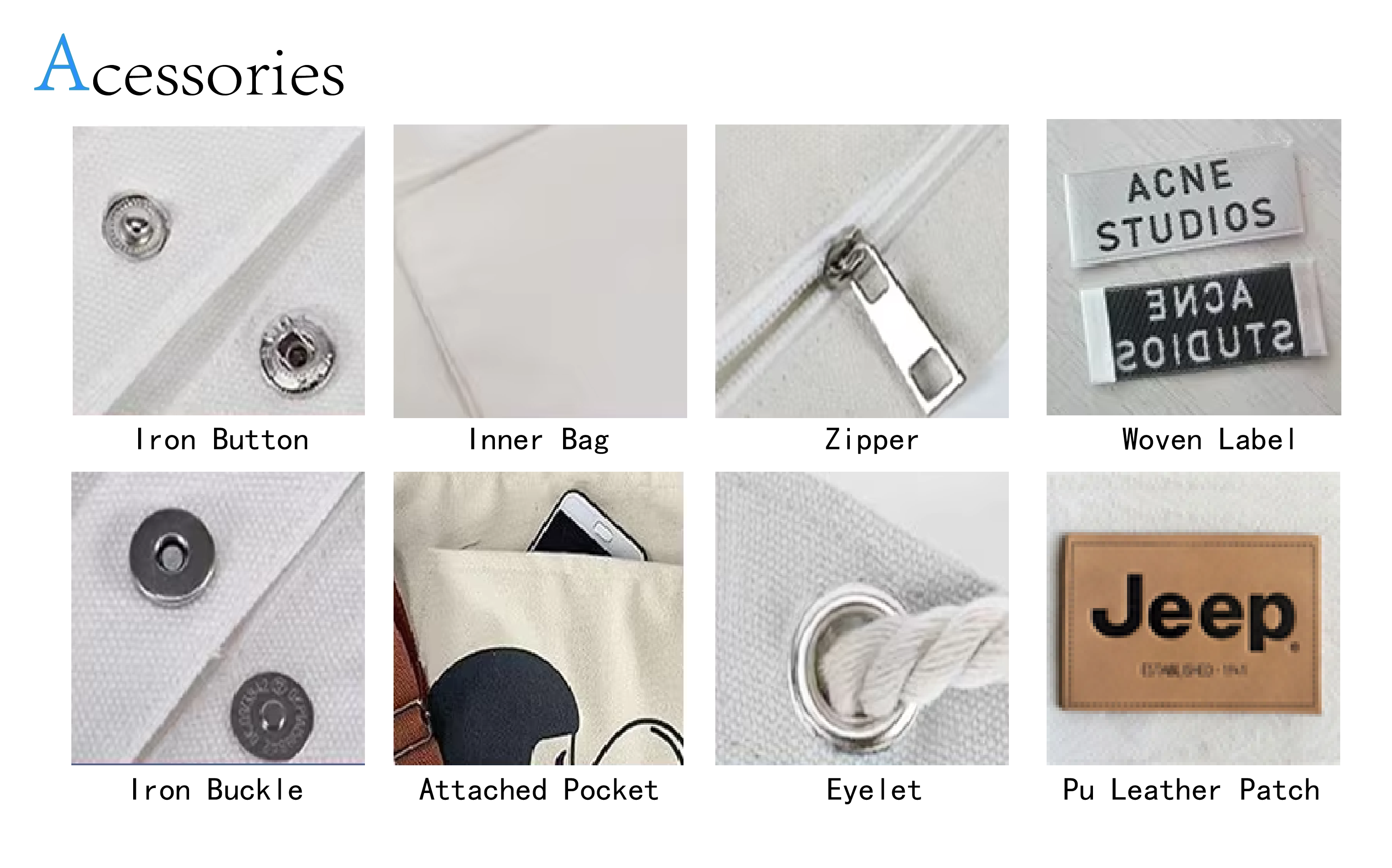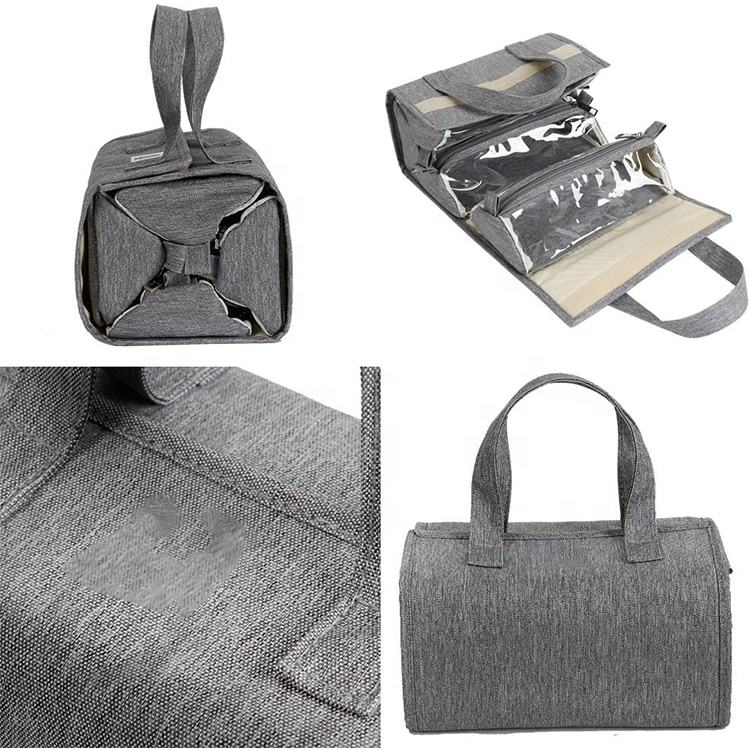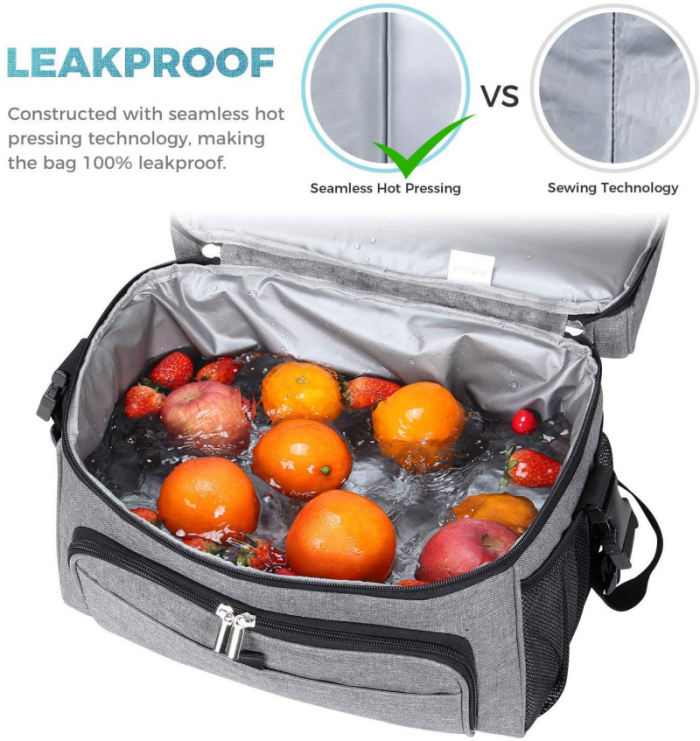 +86-18620643668
+86-18620643668 How to Clean a Smell Proof Bag?
Maintaining a smell proof bag is essential to preserve its odor-blocking functionality and extend its lifespan. This detailed guide integrates step-by-step cleaning methods, odor removal techniques, and preventive tips complemented by comparative charts for visual reference.
I. Essential Cleaning Methods for Smell-Proof Bags
1. Spot Cleaning: Targeted Stain Removal
Materials Needed
●Mild detergent (e.g., dish soap)
●Warm water
●Soft microfiber cloth or sponge (avoid abrasive materials)
Step-by-Step Process
1.Patch Test First: Apply a small amount of the detergent solution to an inconspicuous area (e.g., inside a pocket) to ensure it does not damage the fabric or carbon lining.
2.Gently Scrub Stains: Dip the cloth in the soapy water, wring out excess liquid, and gently dab or scrub stained areas. Avoid vigorous rubbing, which can spread the stain or damage the odor-blocking layer.
Why It Works: Spot cleaning targets specific stains without compromising The Bag’s overall structure, making it ideal for minor spills or surface dirt.
2. Hand Washing: Gentle Deep Cleaning
Materials Needed
●Mild detergent
●Lukewarm water
●Soft cloth or sponge
Step-by-Step Process
1.Prepare the Solution: Mix a few drops of detergent with warm water in a basin.
2.Dab, Don’t Soak: Dampen the cloth with the solution and gently dab the interior and exterior surfaces. Avoid saturating the material, as excessive moisture can damage the carbon lining.
3.Rinse Thoroughly: Use a clean, damp cloth to remove all soap residue, which can trap odors if left behind.
Caution: Never submerge the bag in water, as most Odor Proof bags are not waterproof and water immersion can degrade the odor-blocking functionality.
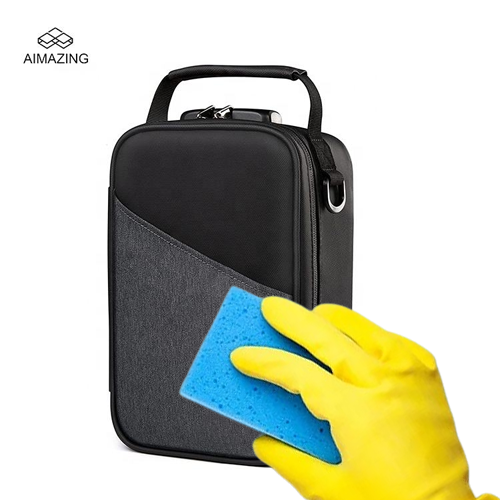
3. Activated Carbon Reactivation: Restoring Odor-Blocking Power
Step-by-Step Process
1.Turn Inside Out: Expose the carbon lining by flipping the bag inside out.
2.Apply Heat:
●Place the bag in a dryer on medium heat for 10–15 minutes.
●Alternatively, use a hairdryer on low heat, keeping it 6–8 inches away from the fabric to avoid overheating.
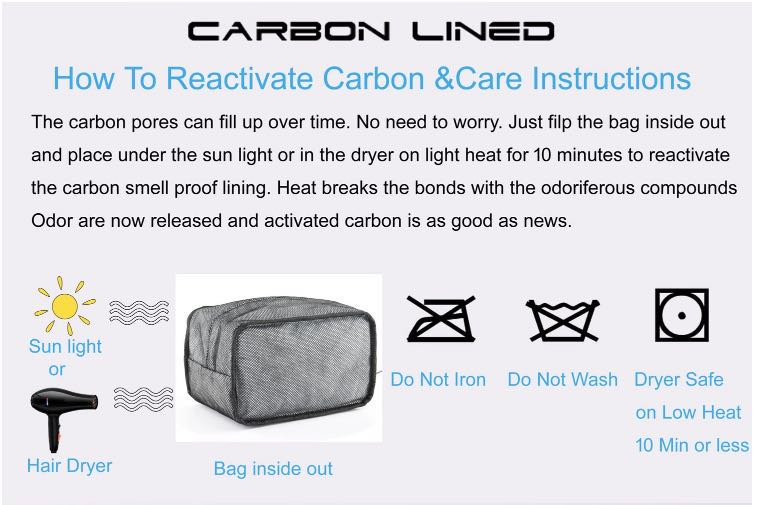
Science Behind It: Heat reactivates the porous structure of activated carbon, allowing it to regain its odor-absorbing capabilities. This method is particularly effective for bags that have lost their effectiveness over time.
II. Advanced Odor Removal Techniques
1. Baking Soda or Activated Charcoal: Natural Odor Absorbers
●Application: Sprinkle 1–2 tablespoons of baking soda inside the bag, or place activated charcoal packets in each compartment.
●Duration: Leave overnight (8–12 hours) to allow the materials to absorb persistent odors.
●Cleanup: Shake out the baking soda or replace the charcoal packets, ensuring no residue remains.
Effectiveness: Baking soda neutralizes acids that cause odors, while activated charcoal adsorbs volatile compounds, making them ideal for routine odor maintenance.
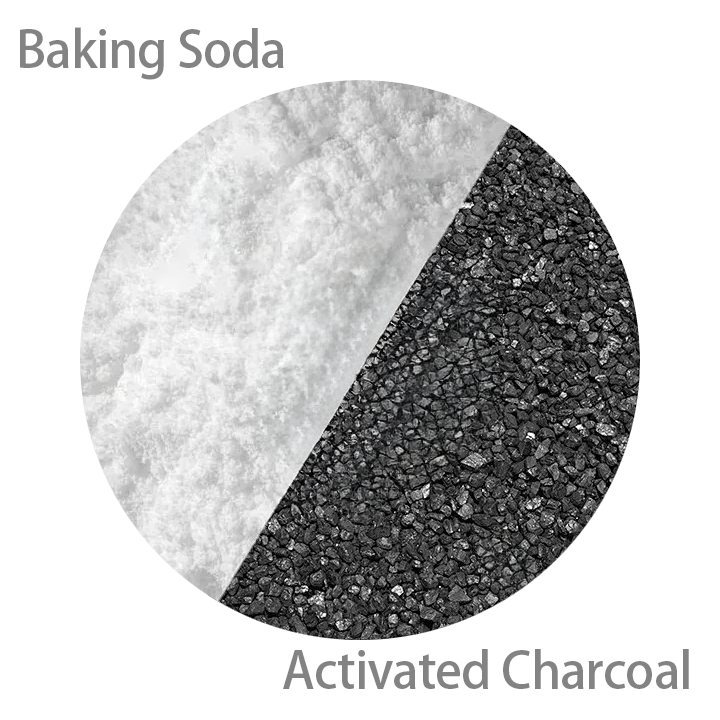
2. Freezing: Eliminating Stubborn Odors
●Process:
a.Wrap the bag in a sealed plastic bag to prevent moisture absorption in the freezer.
b.Freeze for 12–24 hours to kill odor-causing bacteria and neutralize volatile molecules.
c.Thaw the bag in a well-ventilated area, away from direct sunlight.
When to Use: This method is best for bags exposed to strong odors (e.g., spices, herbs) or after prolonged use without cleaning.

III. Prohibited Materials and Conditions
1. Cleaning Taboos: What to Avoid
●Machine Washing: Washing machines cause mechanical stress that damages the carbon lining and reduces odor-blocking effectiveness.
●Harsh Chemicals: Substances like bleach, vinegar, ammonia, or abrasive cleaners degrade the fabric and destroy the activated carbon structure.
●Direct Sunlight: Prolonged exposure fades the fabric, weakens materials, and reduces the efficacy of odor-blocking layers.
Consequence: Using these methods can shorten the bag’s lifespan and compromise its primary function of blocking odors.
IV. Preventive Maintenance: Extending Lifespan
1. Regular Airing Out
●Practice: After each use, turn the bag inside out and let it ventilate in a cool, dry place for 1–2 hours.
●Benefit: Ventilation prevents moisture buildup, which can lead to mold growth and odor retention.

2. Use of Liners
●Recommendation: Store wet or pungent items in separate plastic bags or reusable liners before placing them in the odor-proof bag.
●Effect: Liners protect the bag’s interior from spills, stains, and direct contact with odor-causing substances.
3. Avoid Overfilling
●Guideline: Do not overstuff the bag; leave enough space for air circulation.
●Rationale: Proper airflow reduces humidity and prevents the buildup of bacteria that cause odors.
V. Comparative Analysis of Cleaning Methods
Effectiveness and Efficiency of Key Methods
| Method | Effectiveness | Time Required | Tools Needed |
| Spot Cleaning | High (targeted stains) | 5–10 minutes | Soft cloth, mild detergent |
| Hand Washing | Moderate (general cleaning) | 15–20 minutes | Soft cloth, water, detergent |
| Baking Soda/Charcoal | Moderate (odor absorption) | Overnight (8–12h) | Baking soda or charcoal packets |
| Heat Reactivation | High (restores odor blocking) | 10–15 minutes | Dryer or hairdryer |
Effectiveness of Odor Absorption Over Time
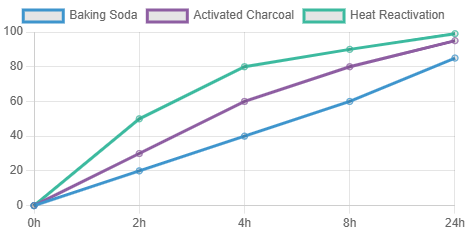
Key Findings:
●Baking Soda: Shows immediate absorption (50% within 2 hours), peaking at 70% after 8 hours.
●Activated Charcoal: Slower initial absorption (30% at 2 hours), reaching 85% effectiveness after 24 hours.
●Heat Reactivation: Restores carbon lining to near-100% odor-blocking capacity within 10 minutes, with sustained effectiveness over 24 hours.
Visual Trend: Activated charcoal demonstrates the highest long-term odor absorption, while heat reactivation provides the quickest restoration of functionality.
VI. Key Takeaways and Best Practices
1.Cleaning Philosophy:
Gentle spot cleaning and hand washing are preferable to harsh methods, as most smell-proof bags require delicate care to maintain their odor-blocking layers.
2.Maintenance Routine:
Reactivate carbon linings via heat treatment every 1–2 months, and use baking soda or charcoal for regular odor control.
3.Preventive Care:
Proper ventilation, liners, and avoid overfilling are crucial to minimizing odor buildup and reducing the need for deep cleaning.
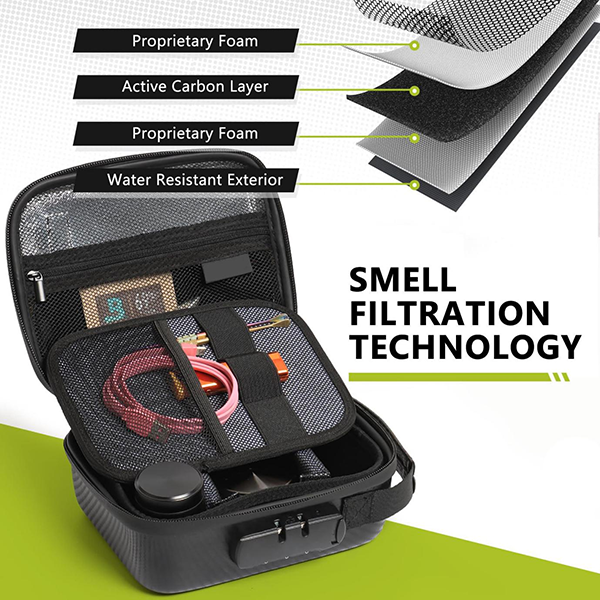
VII. Conclusion
Cleaning a smell-proof bag requires a balance of gentle cleaning techniques and strategic odor removal methods. By following the steps outlined here—including spot cleaning, heat reactivation, and natural odor absorbers—you can preserve the bag’s functionality while extending its lifespan. Remember, consistent preventive maintenance is key to ensuring your smell-proof bag remains effective and durable for years to come.
Composition of Activated Carbon Smell Proof Bag
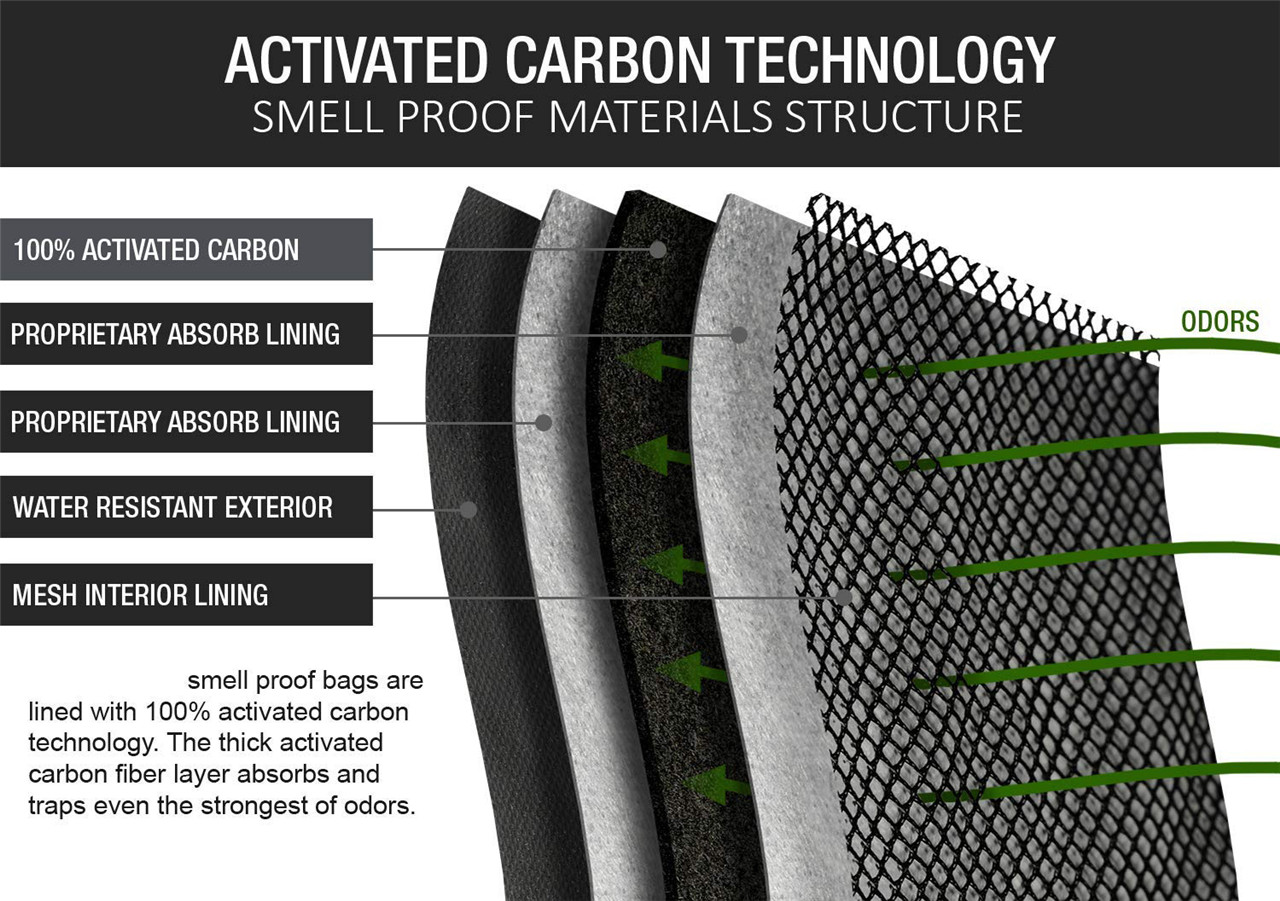
Functions of Activated Carbon Odor Proof Bag
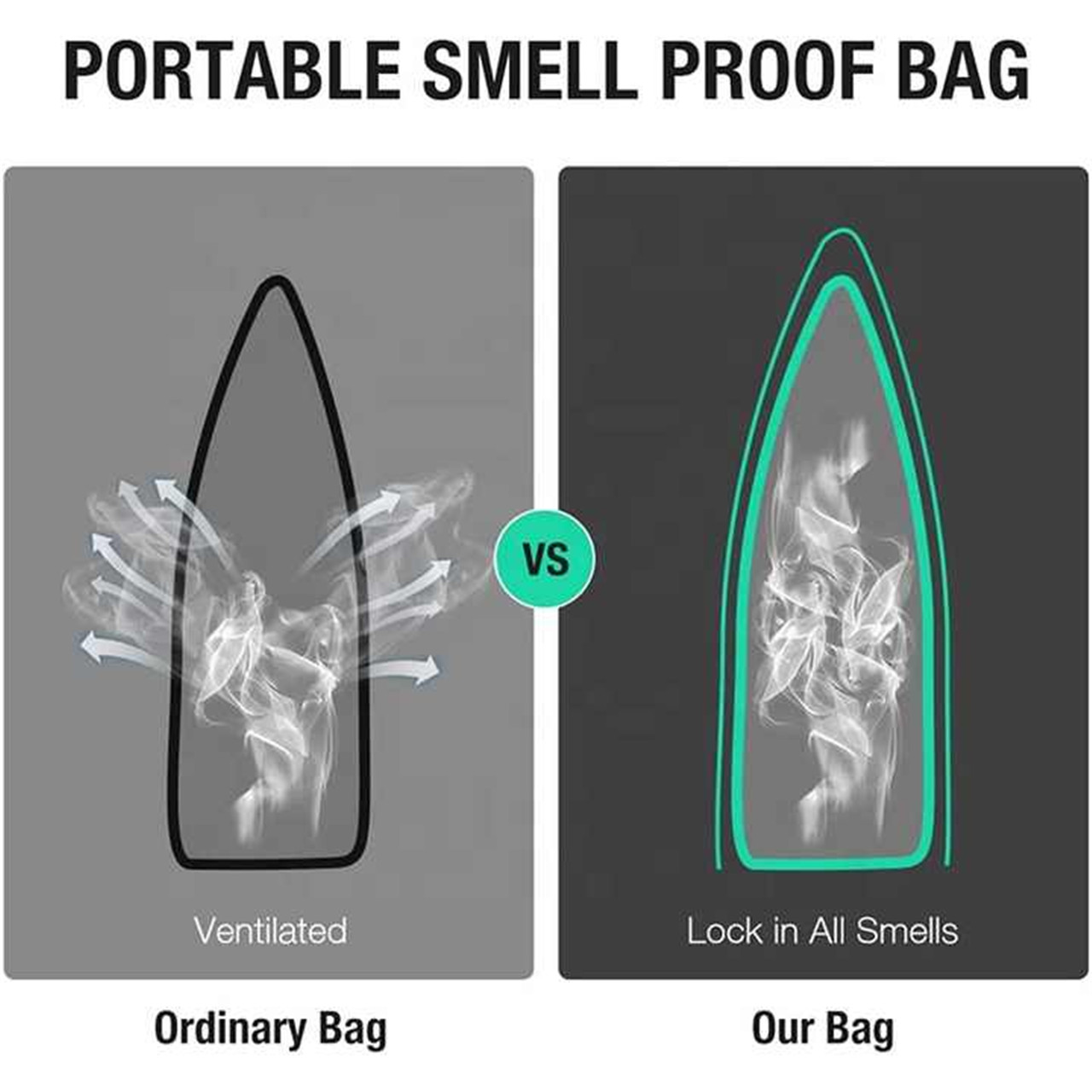
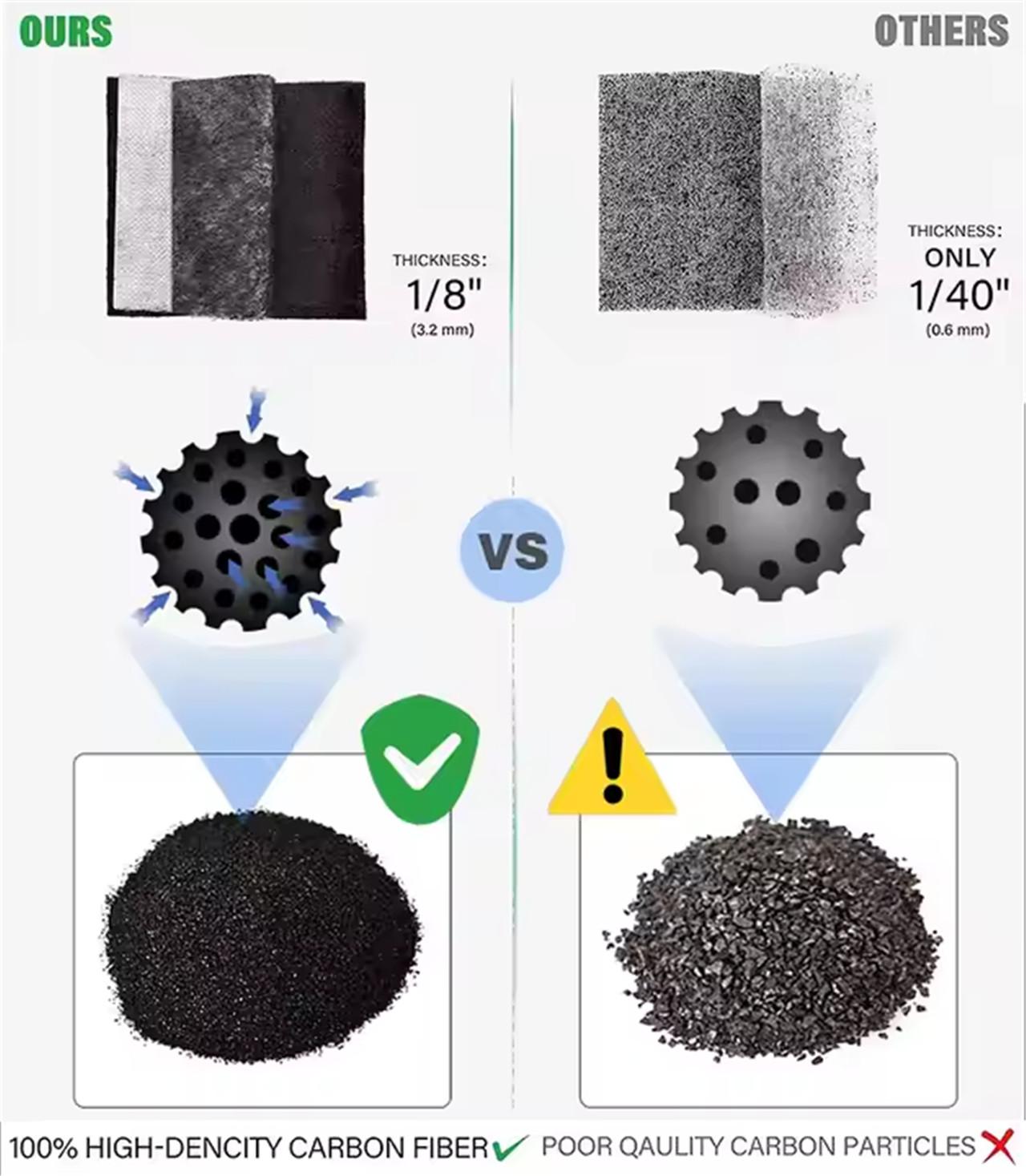
Usage of Smell Proof Bag












